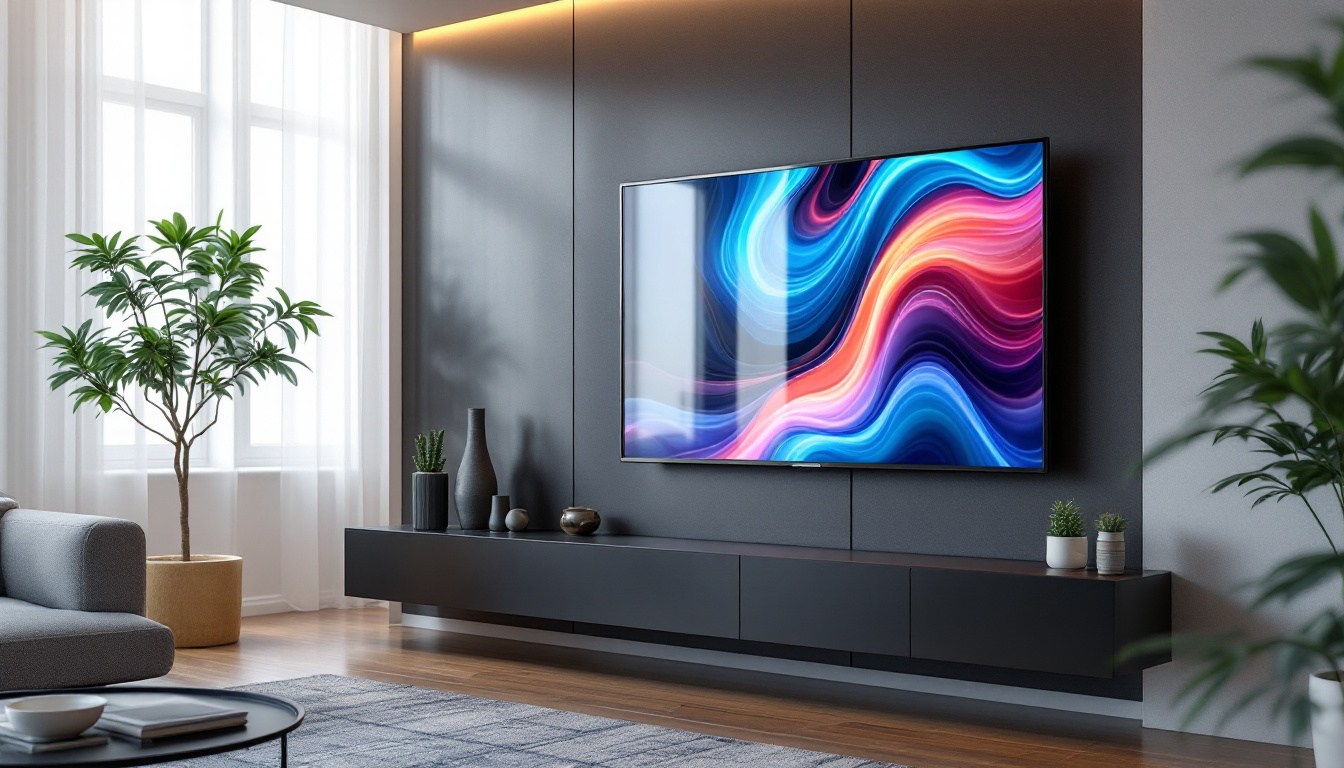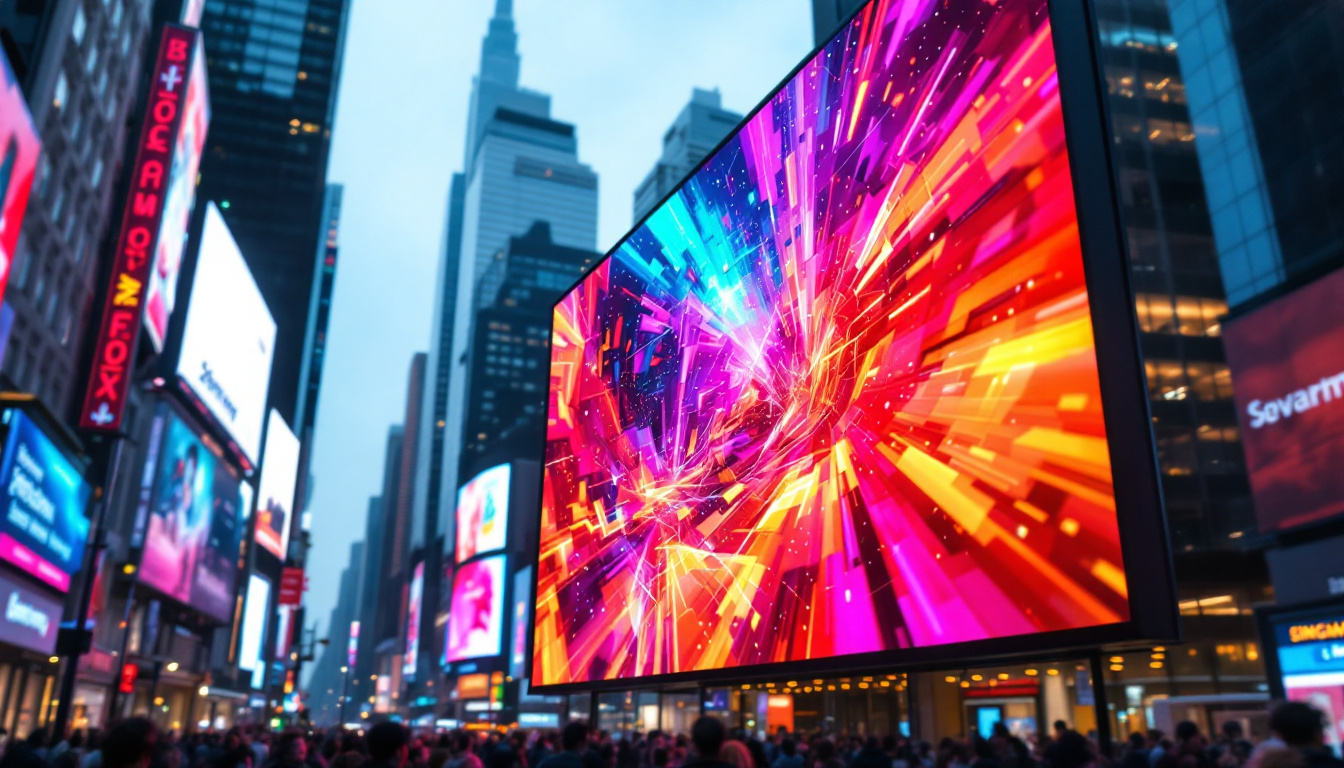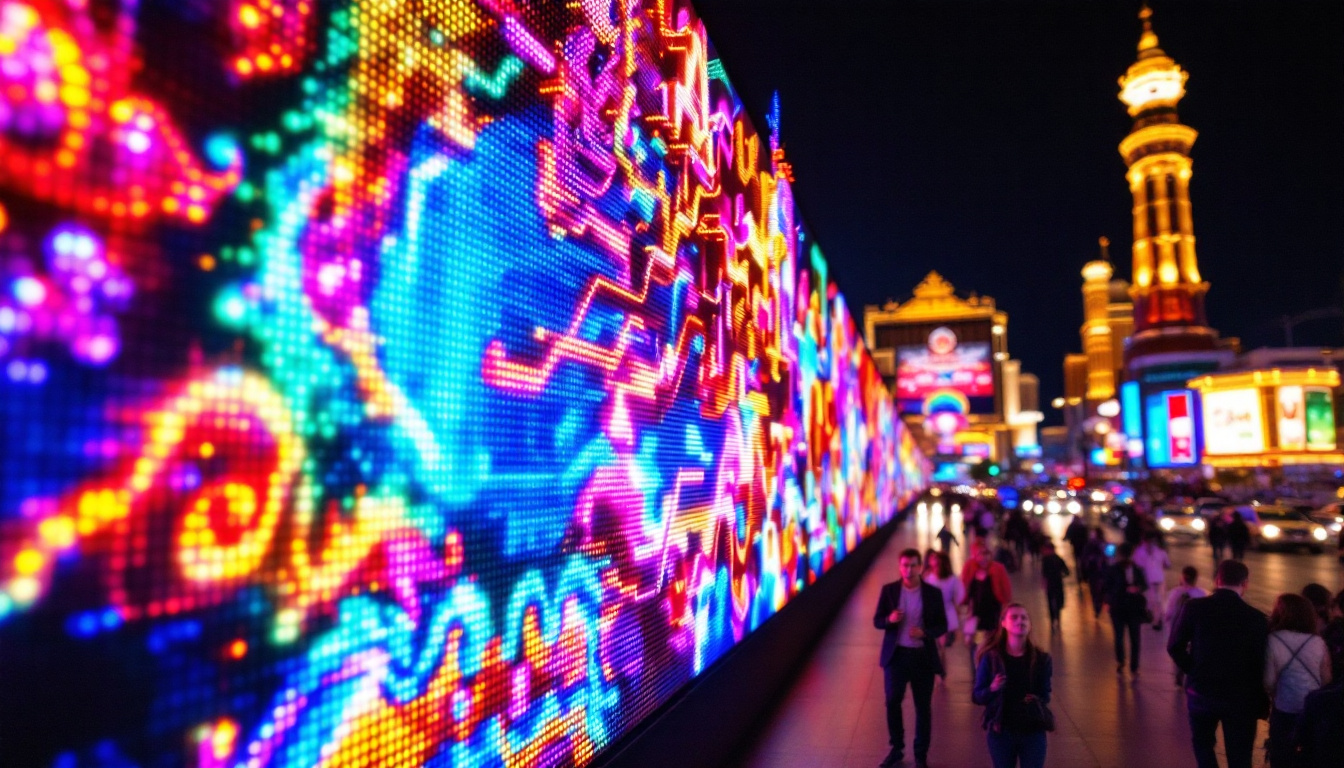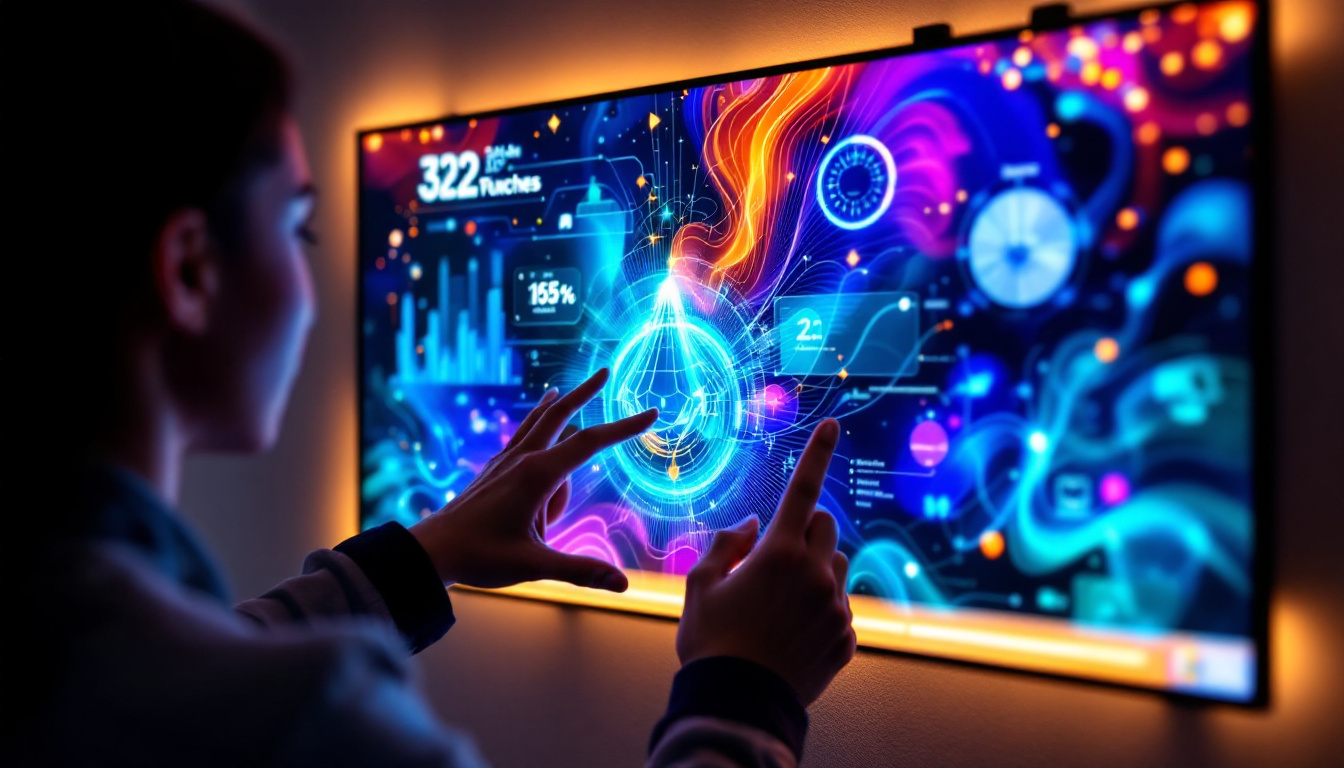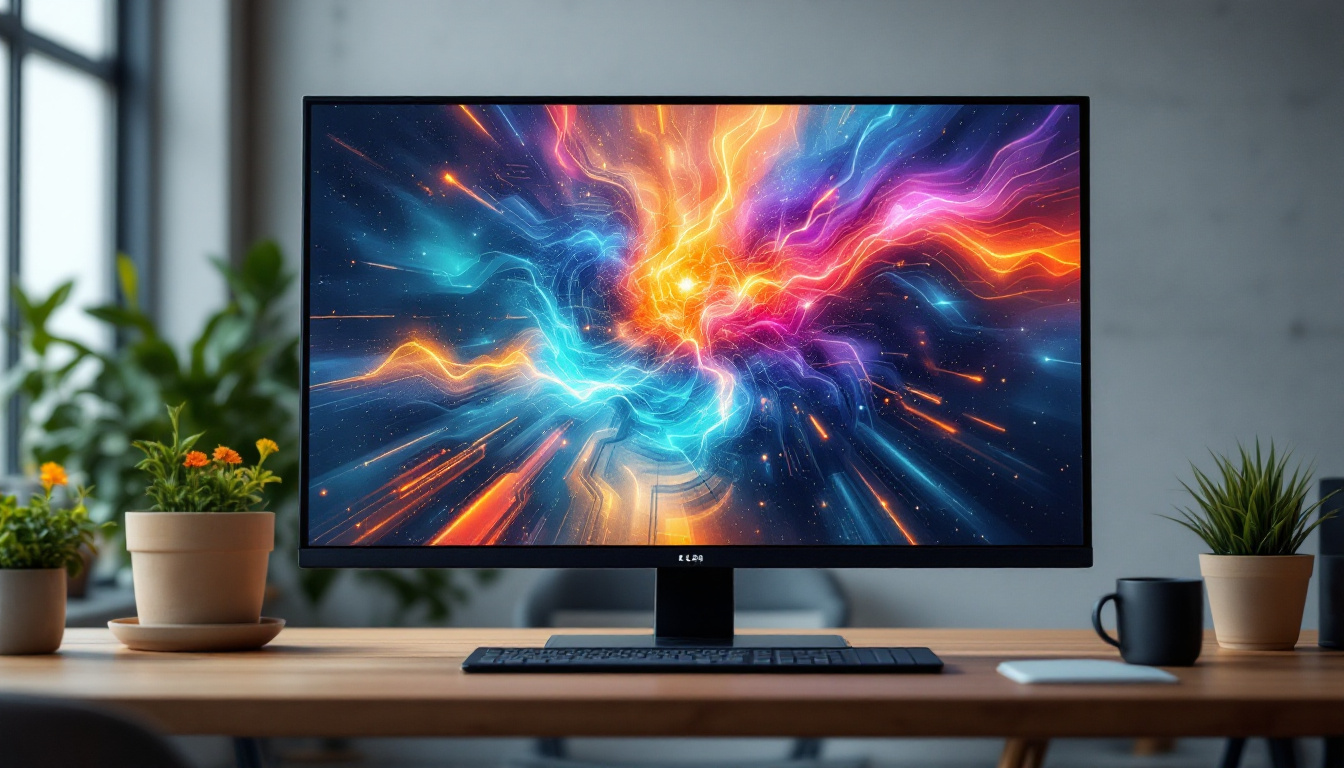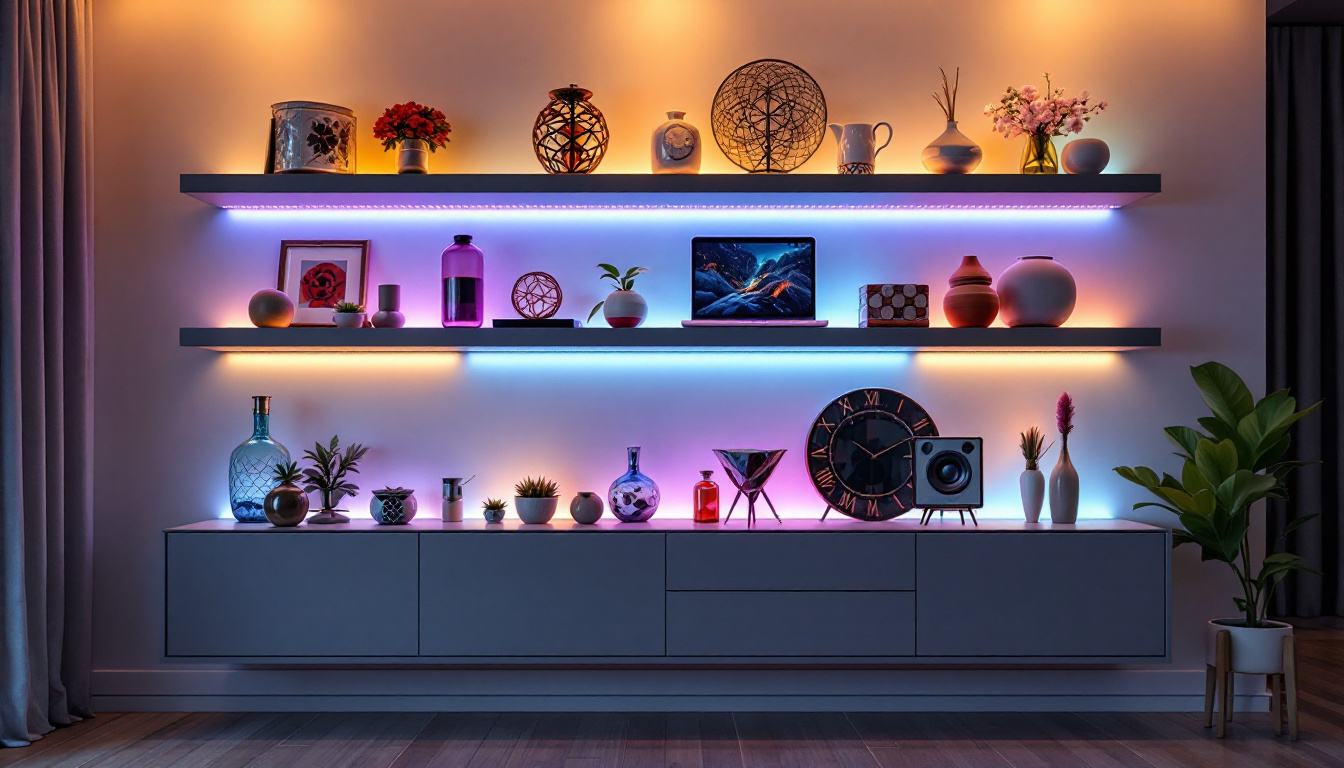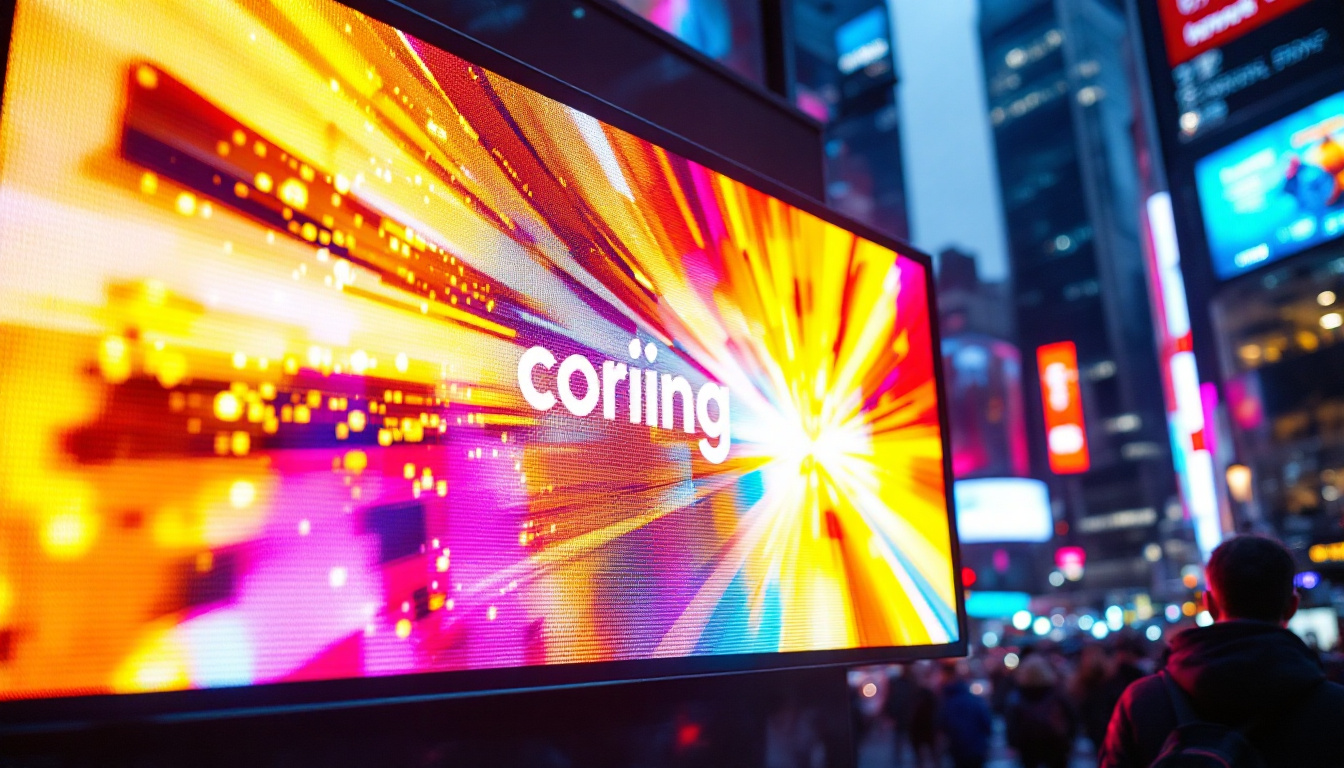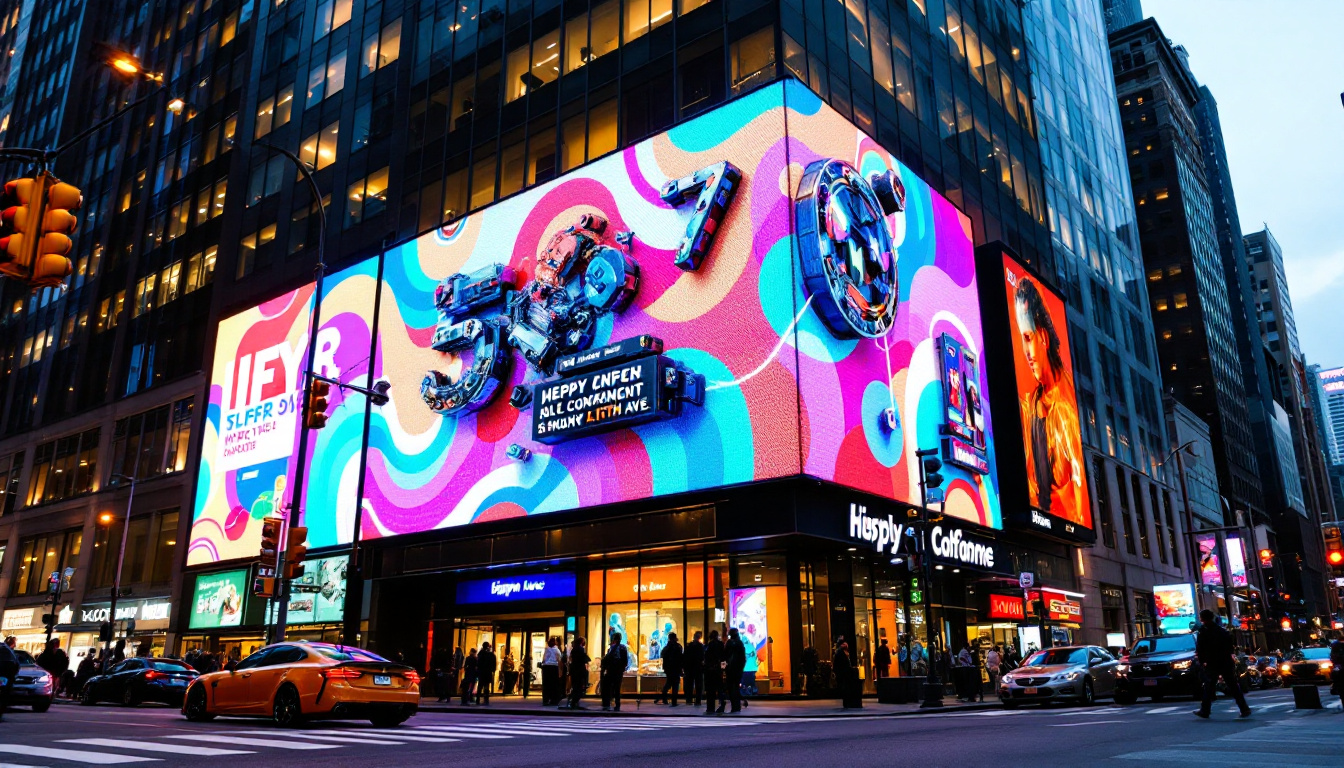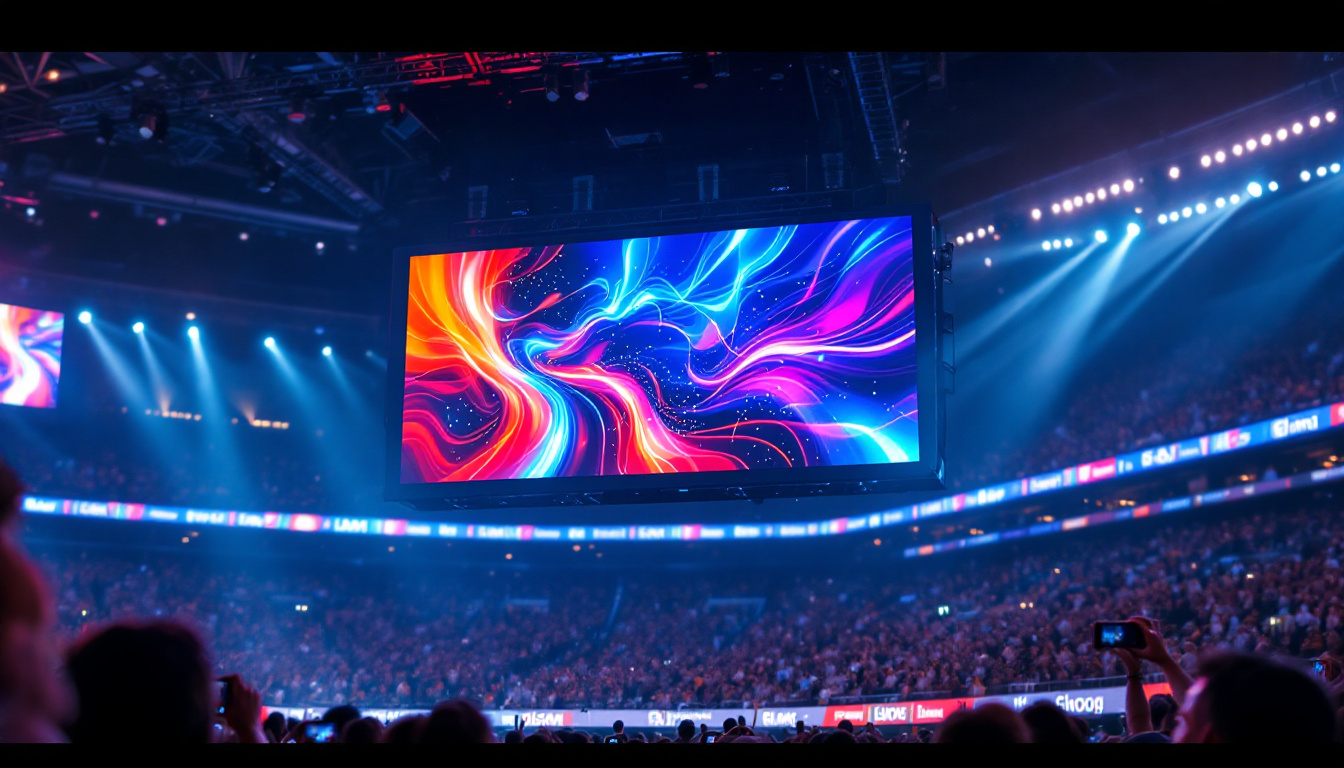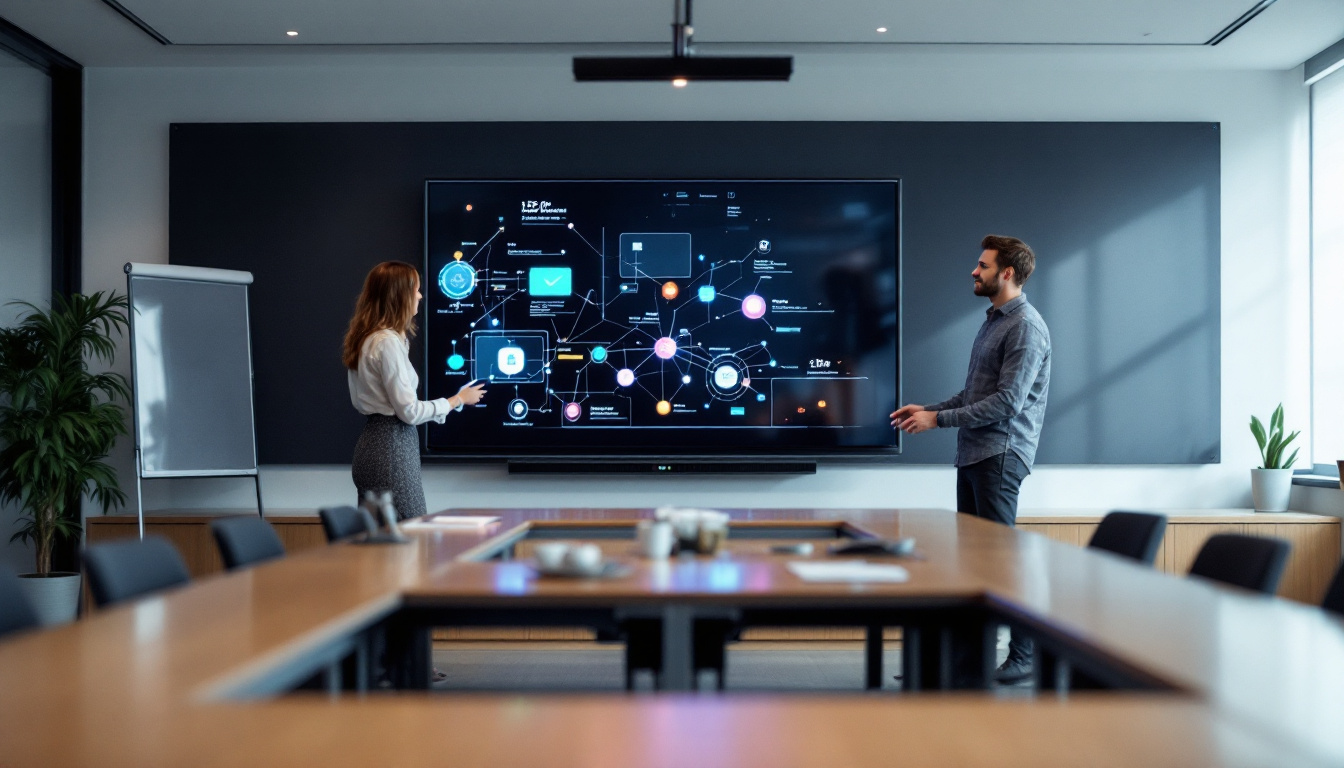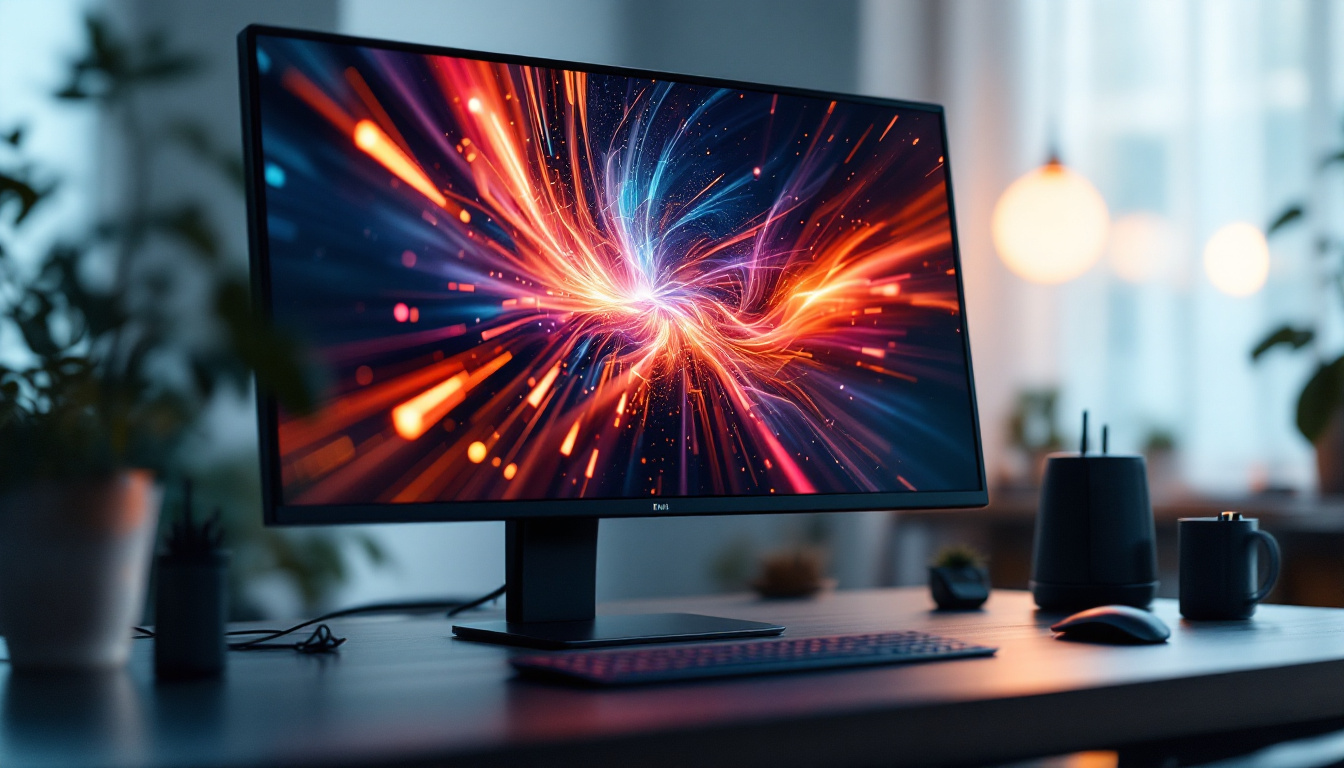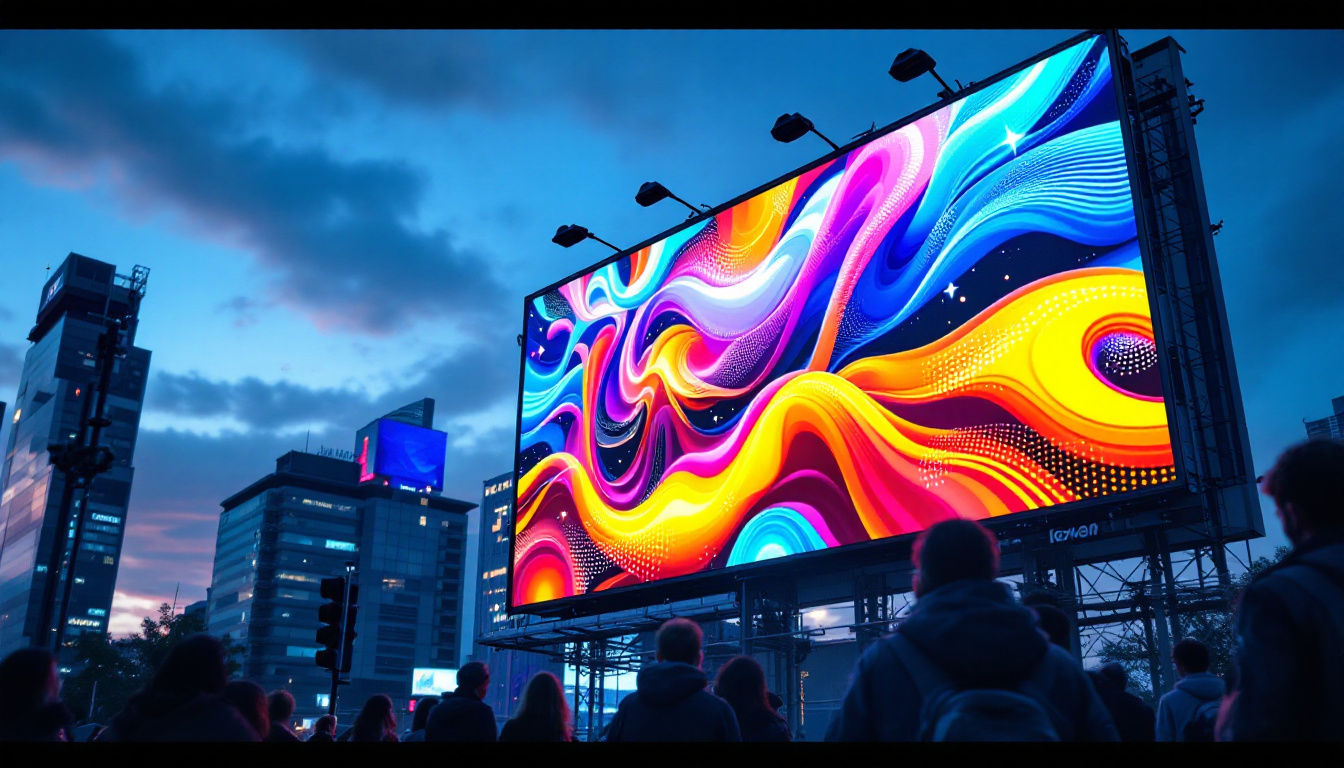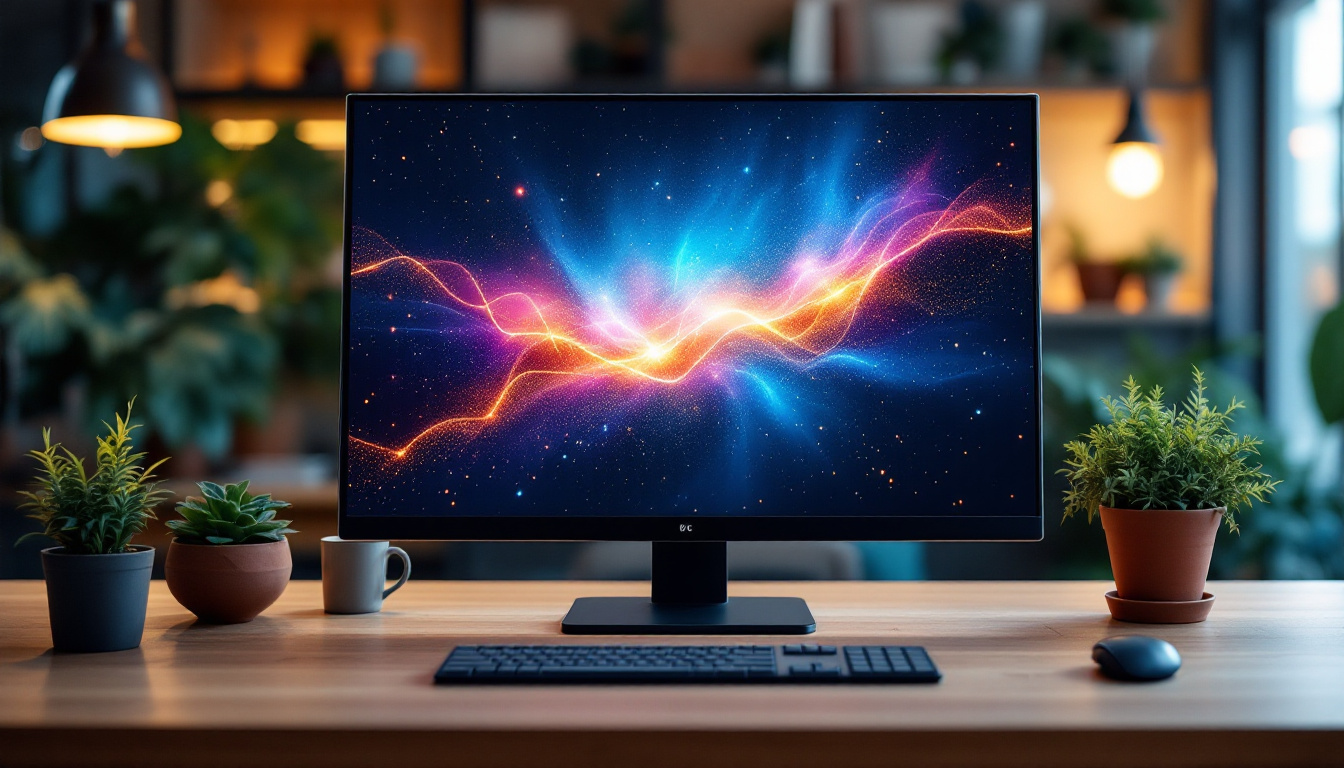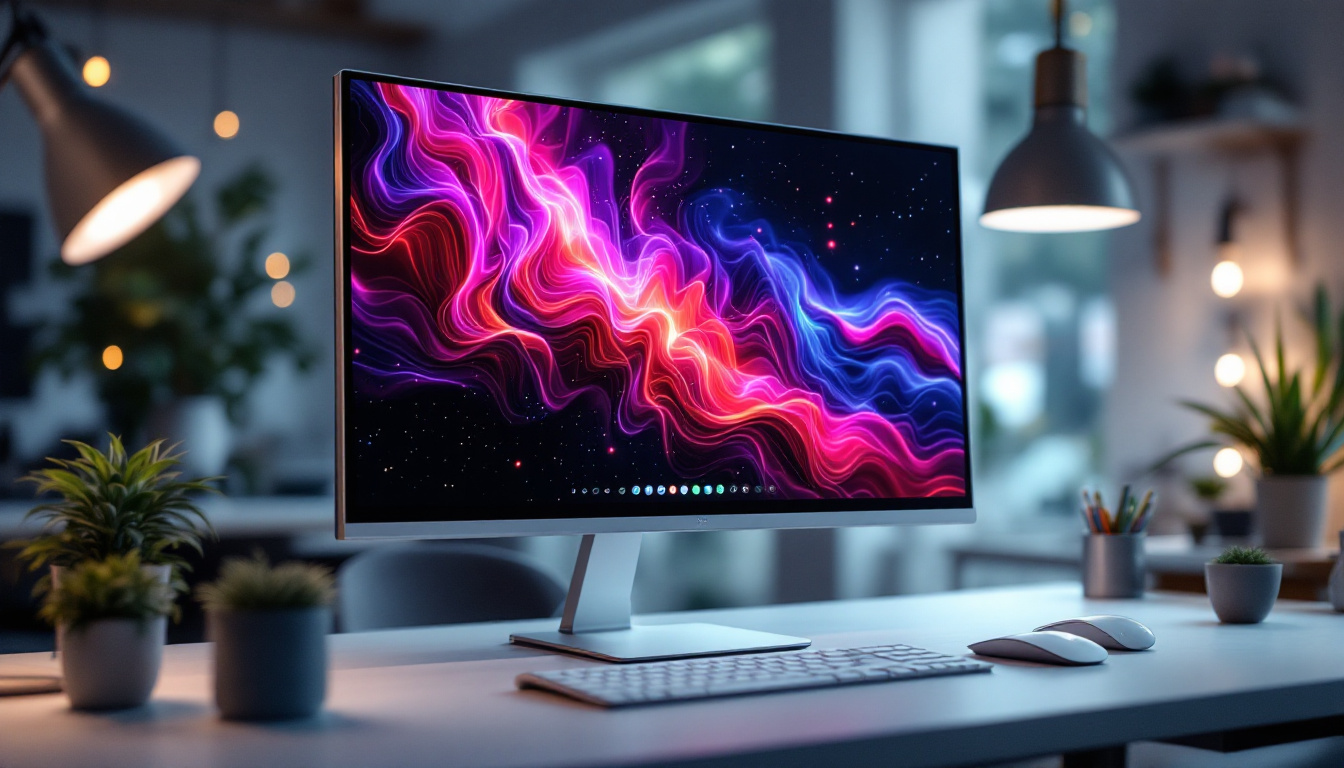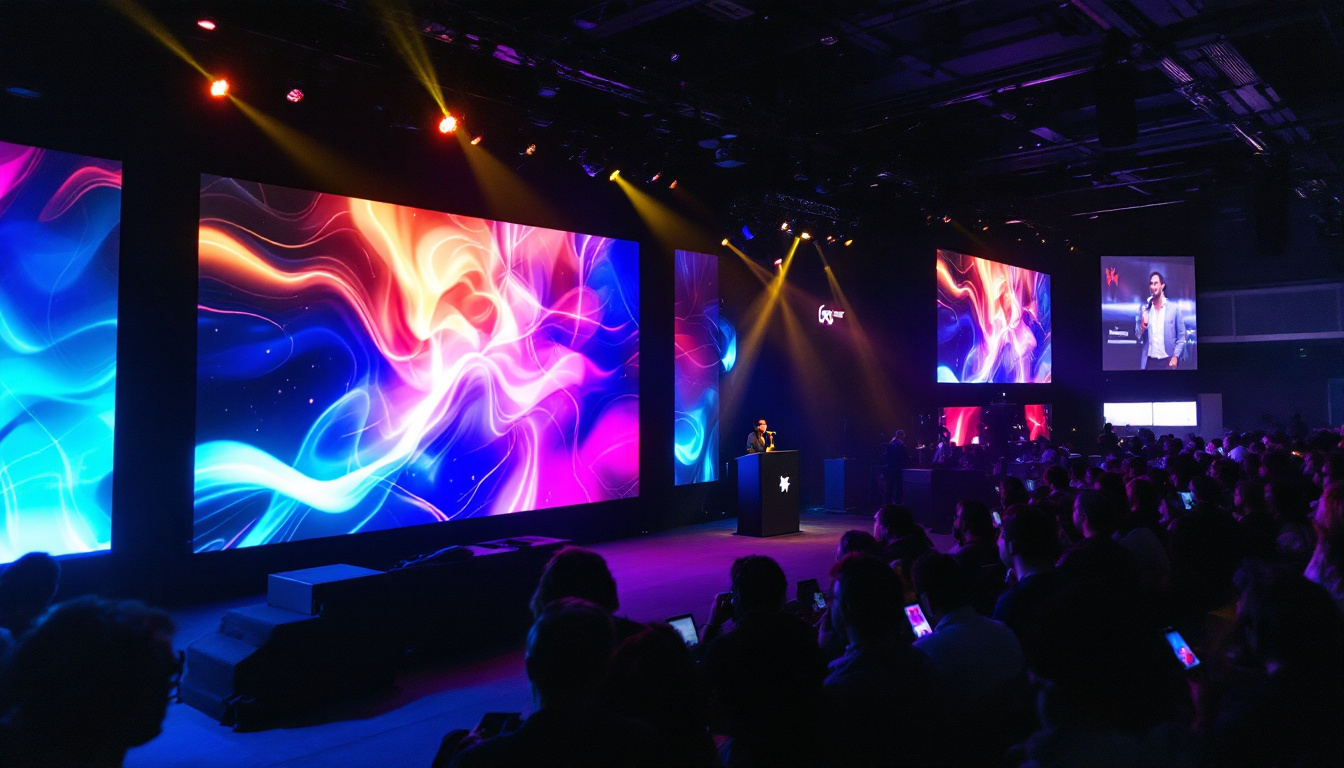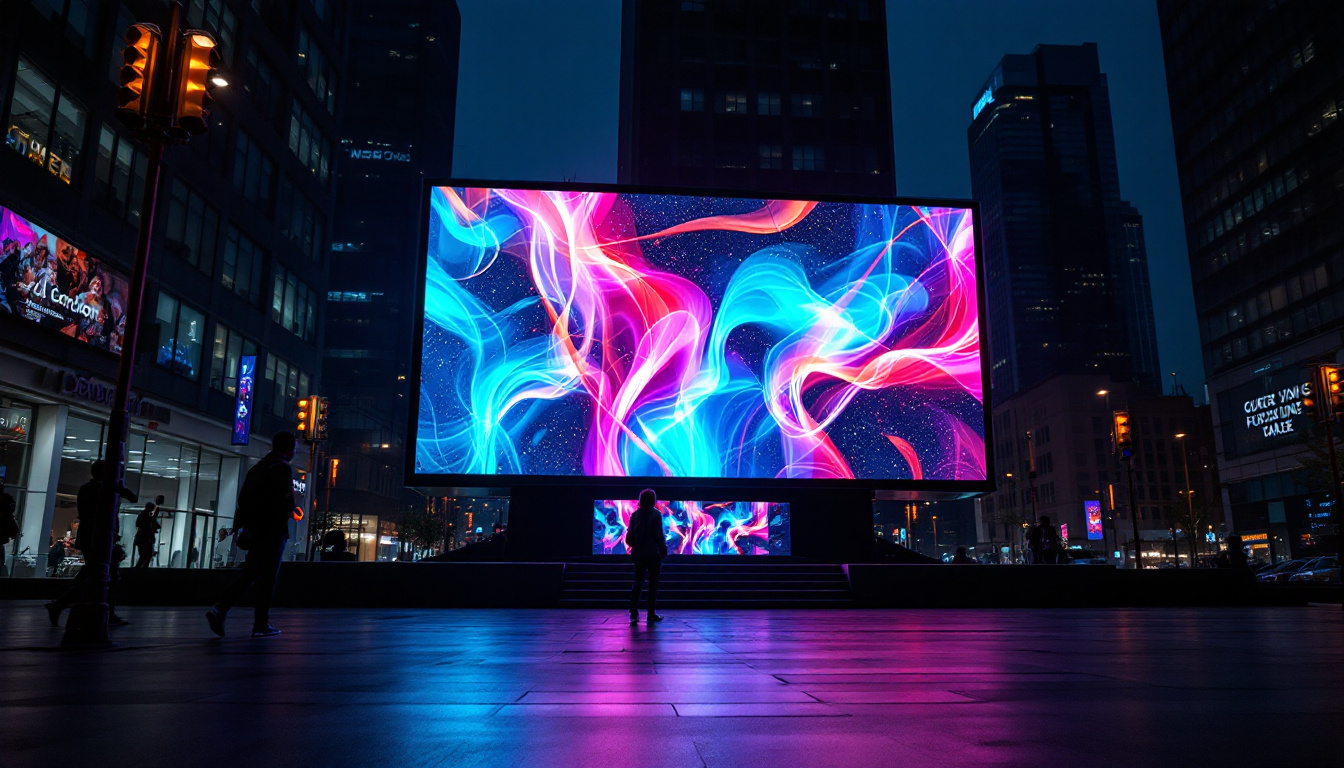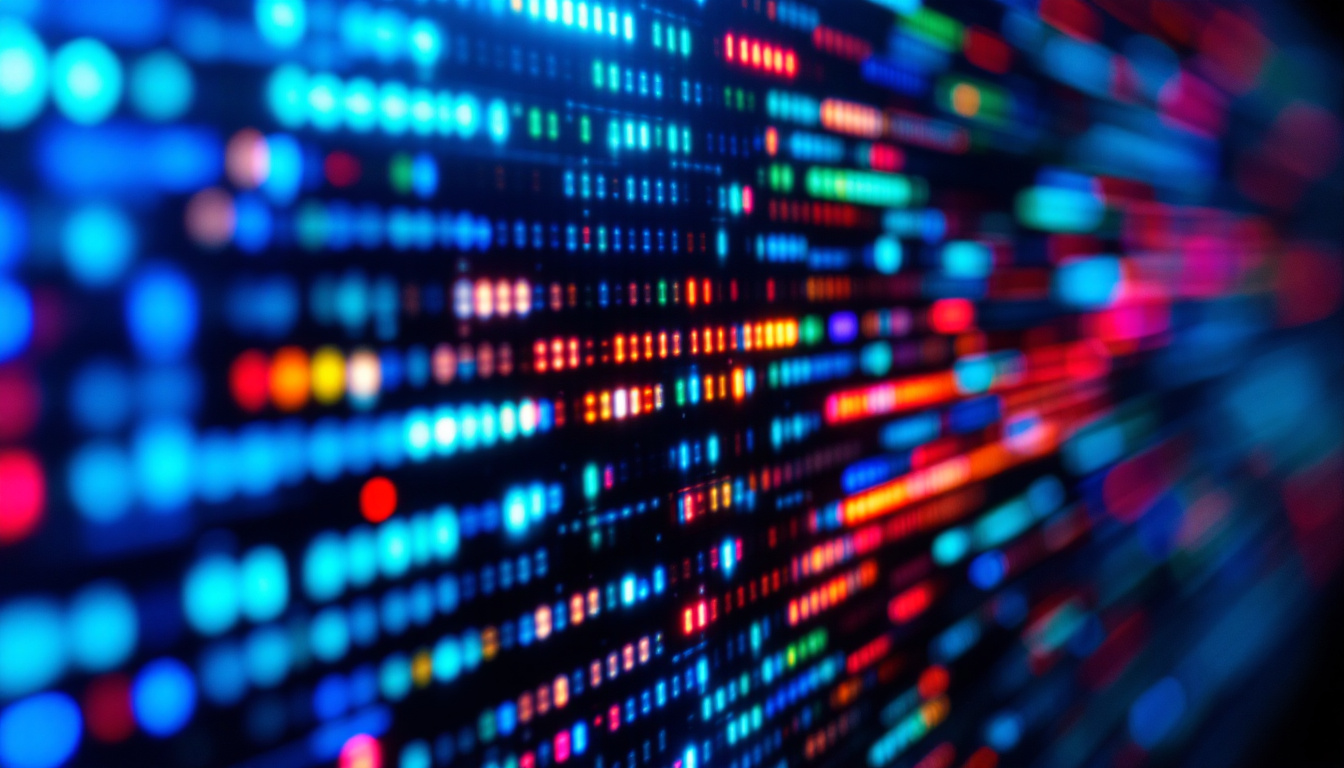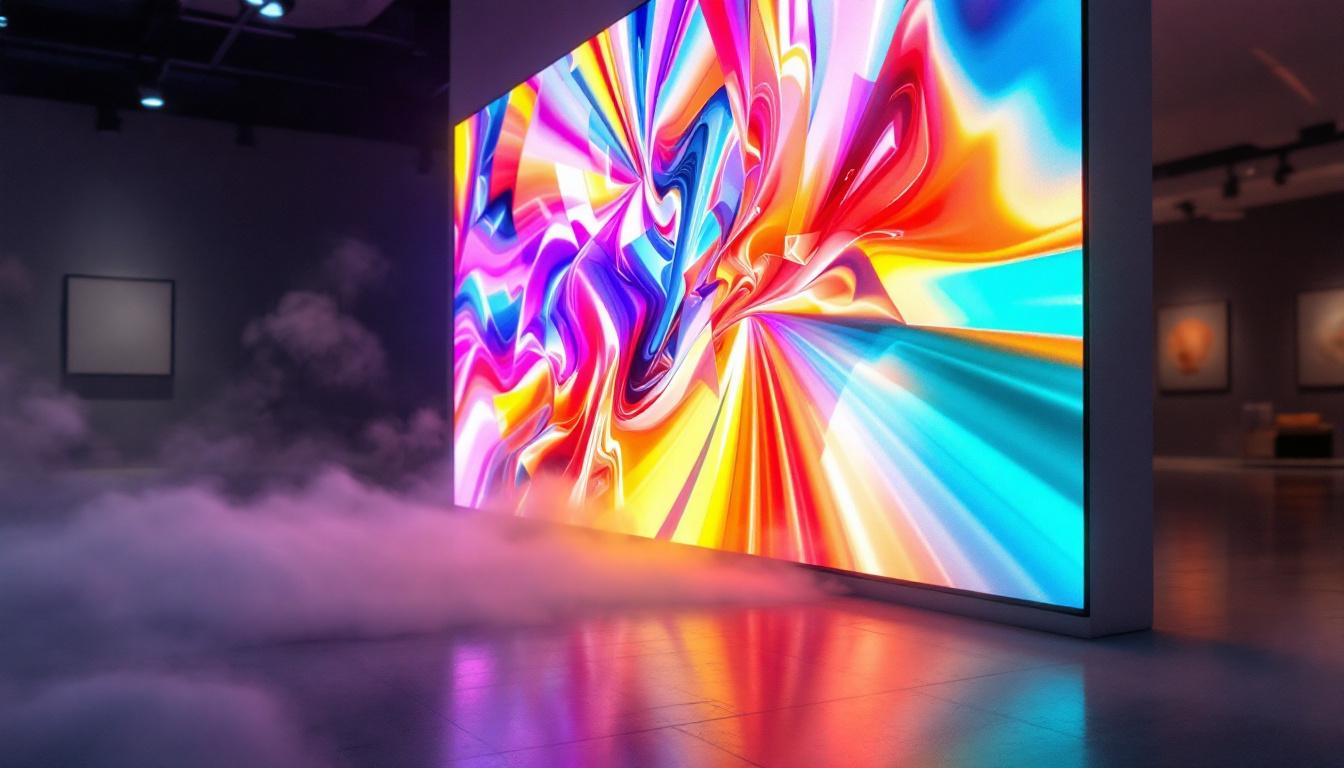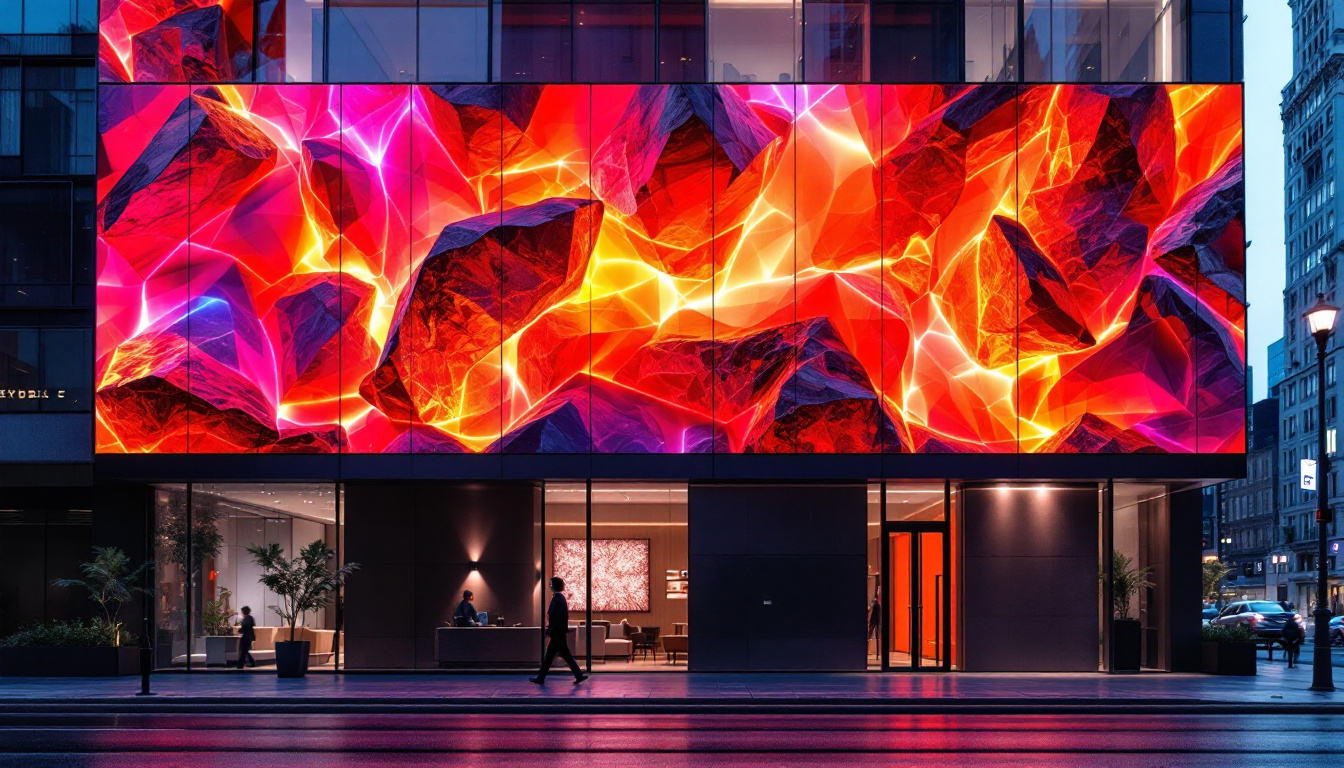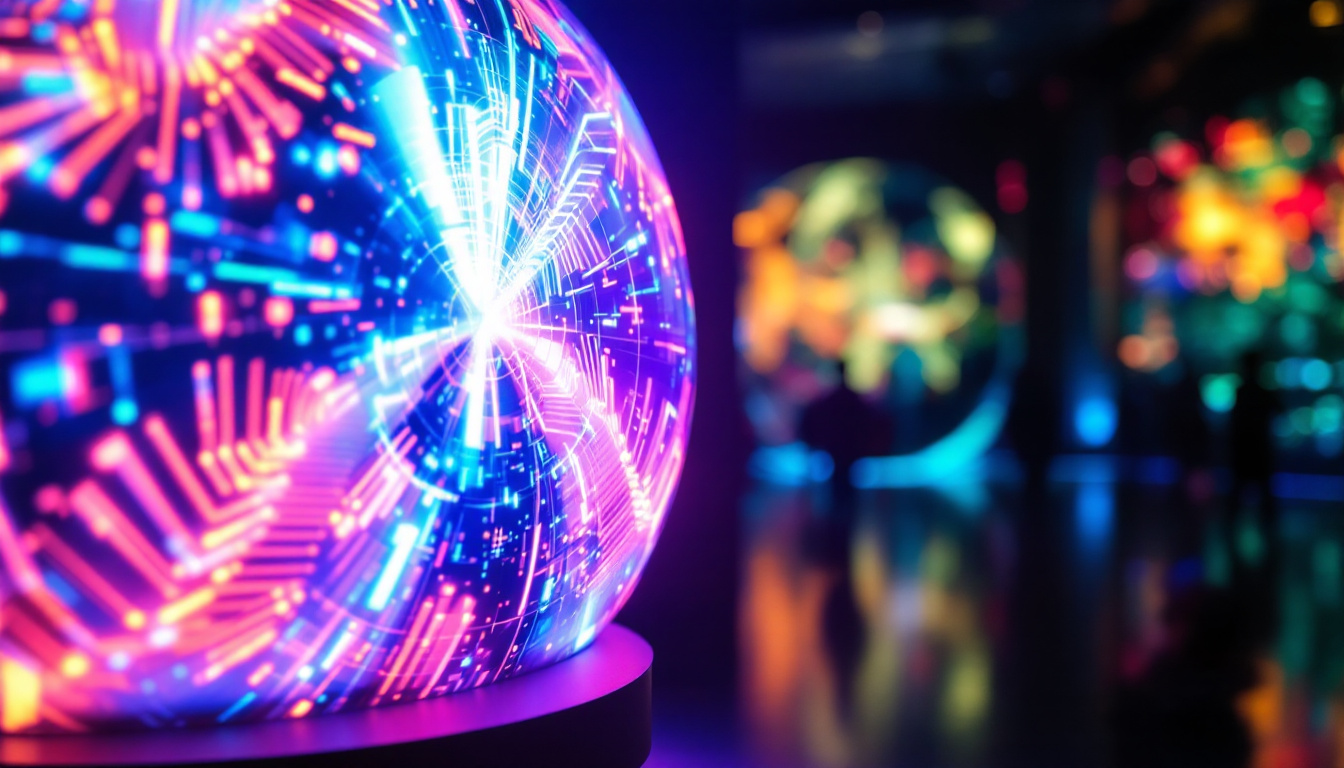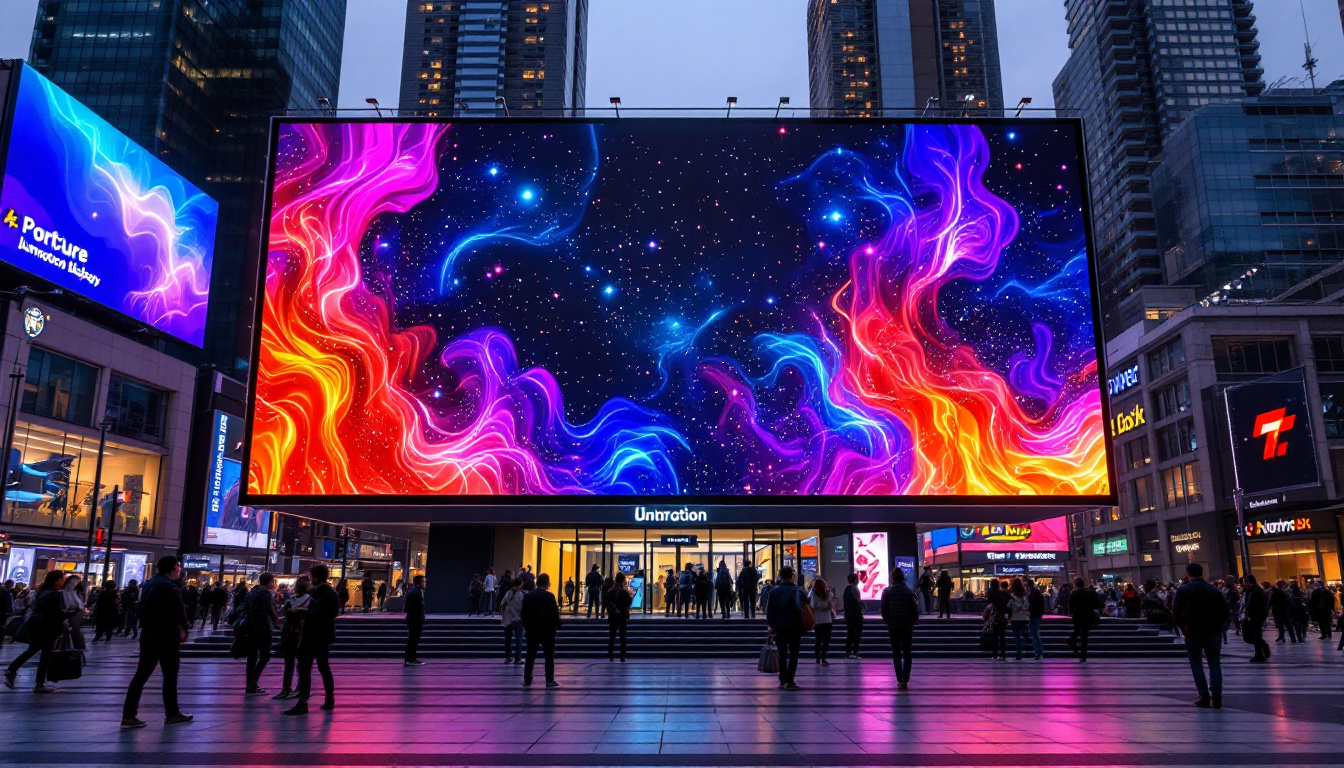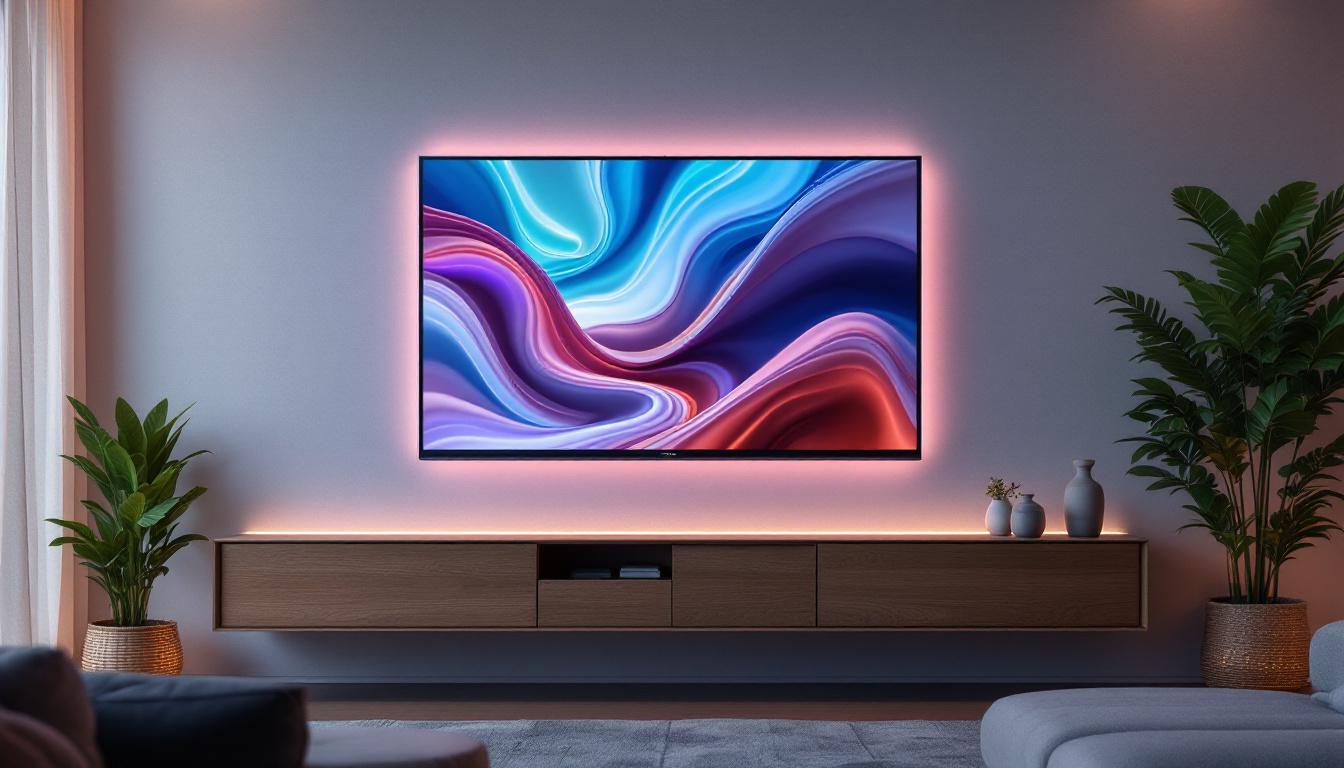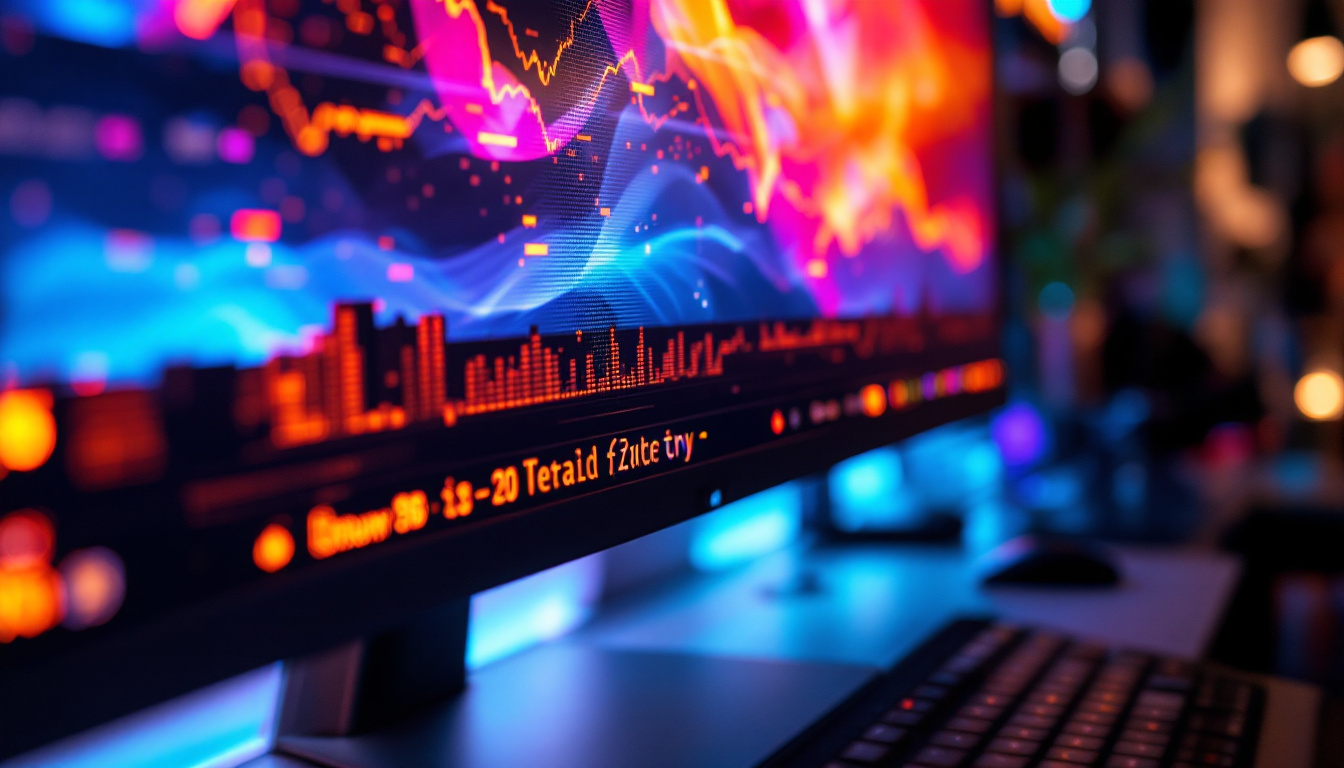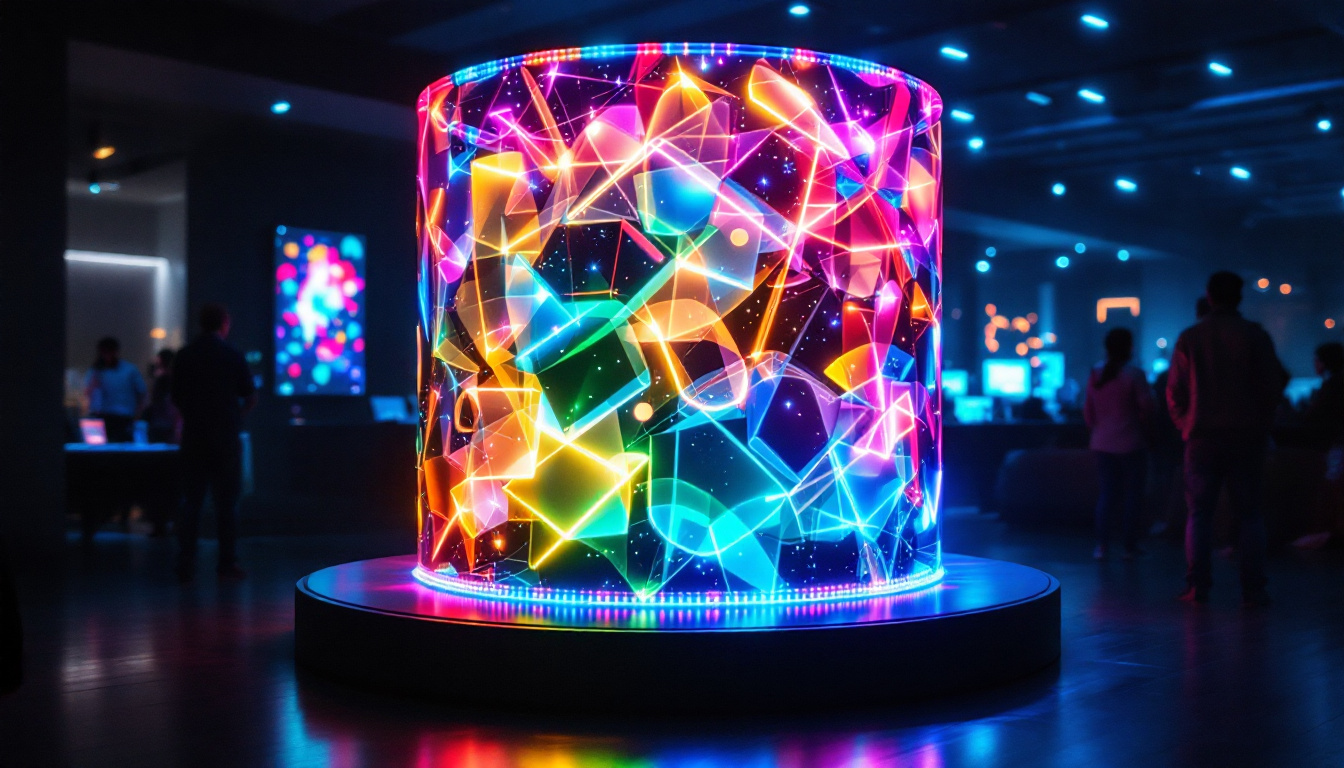In recent years, LED technology has revolutionized the way we experience visual content. From home entertainment systems to commercial displays, LED TVs have become a staple in modern viewing. This article delves into the intricacies of LED display technology, particularly focusing on LED TV wall panels, their features, advantages, and applications.
Understanding LED Technology
LED, or Light Emitting Diode, is a semiconductor device that emits light when an electric current passes through it. This technology has been adapted for various applications, including lighting and display screens. In the context of televisions, LED technology enhances picture quality, energy efficiency, and overall viewing experience. The rise of LED technology has not only transformed how we watch television but has also influenced the design of modern homes, with sleek, thin screens that can be mounted on walls or integrated into furniture, creating a seamless aesthetic.
How LED Displays Work
LED displays function by using a matrix of tiny light-emitting diodes to create images. Each diode can emit different colors, and when combined, they produce a full spectrum of colors. The most common configurations include:
- Direct LED: LEDs are placed directly behind the screen, providing uniform brightness and better contrast.
- Edge-Lit LED: LEDs are positioned along the edges of the screen, which allows for a thinner profile but may result in less uniform brightness.
Additionally, the technology has evolved to include features like local dimming, where specific areas of the screen can dim or brighten independently, enhancing contrast and depth in images. This capability allows for a more immersive viewing experience, especially in scenes with high dynamic range, where bright highlights and deep shadows coexist. Furthermore, advancements in color accuracy and processing have led to displays that can reproduce colors closer to what the human eye perceives, making the visual experience more lifelike.
The Role of Backlighting
Backlighting is a crucial aspect of LED displays. It determines how well the screen can reproduce colors and contrast. There are various backlighting techniques, including:
- Full Array Backlighting: Provides the best picture quality by using a grid of LEDs behind the entire screen.
- Edge-Lit Backlighting: Uses fewer LEDs along the edges, making the TV thinner but potentially compromising picture quality.
Understanding these backlighting techniques is essential for consumers when choosing an LED TV, as they directly impact the viewing experience. Moreover, the choice of backlighting can affect the energy consumption of the television, with full array backlighting generally using more power due to the increased number of LEDs. As energy efficiency becomes a priority for many households, consumers are increasingly looking for models that balance performance with sustainability. Innovations such as adaptive brightness control, which adjusts the backlighting based on ambient light conditions, are also gaining popularity, further enhancing the user experience while promoting energy savings.
Advantages of LED TV Wall Panels
LED TV wall panels offer numerous benefits that make them a preferred choice for both residential and commercial applications. Their advantages range from superior image quality to energy efficiency.
Enhanced Picture Quality
One of the most significant advantages of LED TV wall panels is their ability to deliver exceptional picture quality. With higher brightness levels, vibrant colors, and improved contrast ratios, LED displays provide a more immersive viewing experience. This is particularly important for applications such as gaming, movie watching, or presentations where visual clarity is paramount. Furthermore, many LED panels incorporate advanced technologies such as HDR (High Dynamic Range) and local dimming, which enhance the depth and detail of images, allowing viewers to experience content as it was intended by the creators.
Energy Efficiency
Compared to traditional LCD or plasma screens, LED TVs consume significantly less power. This energy efficiency not only reduces electricity bills but also contributes to a smaller carbon footprint. For businesses, this translates to lower operational costs and a more sustainable approach to technology. Additionally, the longevity of LED panels means that they often outlast their predecessors, reducing the need for frequent replacements and further minimizing waste. This durability is particularly beneficial in high-usage environments such as retail displays or public information systems, where reliability is crucial.
Versatility in Design
LED TV wall panels come in various sizes and configurations, making them suitable for diverse environments. Whether it’s a large-scale video wall in a corporate setting or a sleek, minimalist design for a home theater, LED panels can be customized to fit specific aesthetic and functional requirements. Their lightweight nature allows for easy installation, whether mounted on walls or suspended from ceilings, and they can be arranged in creative layouts to enhance visual impact. Moreover, many modern LED panels support multi-screen setups, enabling the creation of dynamic displays that can showcase multiple content streams simultaneously, making them ideal for events, exhibitions, and advertising campaigns.
Improved Viewing Angles
Another notable advantage of LED TV wall panels is their improved viewing angles. Unlike traditional displays that may lose color accuracy and brightness when viewed from the side, LED panels maintain consistent image quality from various angles. This feature is particularly beneficial in environments where large groups of people gather, such as conference rooms, auditoriums, or sports bars, ensuring that everyone has an optimal viewing experience regardless of their position in the room. Additionally, advancements in technology have led to the development of ultra-narrow bezel designs, allowing for near-seamless video walls that create a more cohesive visual experience, drawing viewers into the content being displayed.
Applications of LED TV Wall Panels
The versatility of LED TV wall panels allows them to be used in a wide range of applications. Their adaptability makes them ideal for various settings, from residential to commercial environments.
Residential Use
In homes, LED TV wall panels are often used to create immersive entertainment experiences. With advancements in technology, these panels can now support 4K and even 8K resolutions, providing stunning visuals for movies, sports, and gaming. The sleek design of wall-mounted LED TVs also enhances the overall aesthetics of living spaces.
Commercial Use
In commercial settings, LED TV wall panels are utilized for advertising, information dissemination, and entertainment. Retail stores, airports, and corporate offices use these displays to engage customers and convey important messages. The ability to create large video walls with multiple panels allows for dynamic content presentation, making them an effective marketing tool.
Event and Exhibition Displays
LED TV wall panels are increasingly popular in event management and exhibitions. Their portability and ease of setup make them ideal for trade shows, conferences, and live events. High-resolution displays can showcase presentations, videos, and interactive content, capturing the attention of attendees and enhancing the overall experience.
Choosing the Right LED TV Wall Panel
When selecting an LED TV wall panel, several factors should be considered to ensure the best fit for specific needs. Understanding these factors can help consumers make informed decisions.
Screen Size and Resolution
The screen size and resolution are critical factors that influence the viewing experience. Larger screens provide a more immersive experience, especially in larger rooms or commercial spaces. Additionally, opting for higher resolutions, such as 4K or 8K, can significantly enhance image clarity and detail.
Brightness and Contrast Ratio
Brightness is measured in nits, and a higher brightness level is essential for environments with significant ambient light. The contrast ratio, which compares the brightest and darkest parts of the screen, also plays a crucial role in picture quality. A higher contrast ratio ensures deeper blacks and brighter whites, contributing to a more dynamic image.
Connectivity Options
Modern LED TV wall panels come equipped with various connectivity options, including HDMI, USB, and wireless capabilities. Ensuring that the chosen panel has the necessary ports for connecting devices is essential for seamless integration into existing setups.
Installation and Maintenance of LED TV Wall Panels
Proper installation and maintenance are vital for maximizing the lifespan and performance of LED TV wall panels. Understanding the installation process and maintenance requirements can help users maintain their displays effectively.
Installation Considerations
Installing an LED TV wall panel requires careful planning. Factors such as wall strength, viewing distance, and cable management should be considered. Professional installation services can ensure that the panel is mounted securely and that all connections are properly managed to avoid clutter.
Regular Maintenance
To keep LED TV wall panels in optimal condition, regular maintenance is essential. This includes cleaning the screen with appropriate materials to avoid scratches and ensuring that the software is updated for the best performance. Additionally, checking connections and cables periodically can prevent issues related to connectivity.
Future Trends in LED Display Technology
The LED display technology landscape is continuously evolving, with innovations that promise to enhance user experience further. Keeping an eye on these trends can provide insights into what to expect in the near future.
MicroLED Technology
MicroLED technology is emerging as a game-changer in the display industry. By using microscopic LEDs to create individual pixels, MicroLED displays offer superior brightness, color accuracy, and energy efficiency. This technology has the potential to deliver even more immersive experiences, particularly in large-scale installations.
Flexible and Curved Displays
Another exciting development is the advent of flexible and curved LED displays. These panels can be bent and shaped to fit unique spaces, offering new design possibilities for both residential and commercial applications. Curved displays can enhance viewing angles and create a more immersive experience.
Integration with Smart Technology
As smart home technology continues to gain traction, the integration of LED TV wall panels with smart devices is becoming increasingly common. This allows users to control their displays through voice commands or mobile apps, enhancing convenience and functionality.
Conclusion
LED TV wall panels represent a significant advancement in display technology, offering superior picture quality, energy efficiency, and versatility. Understanding the intricacies of LED displays, their advantages, applications, and future trends can help consumers make informed decisions when choosing the right panel for their needs. As technology continues to evolve, LED displays are poised to remain at the forefront of visual experiences, transforming the way content is consumed and enjoyed.
Discover LumenMatrix LED Display Solutions
Ready to elevate your visual experience with the latest in LED display technology? Look no further than LumenMatrix, a pioneer in creating LED display modules that bring your content to life. Whether you’re seeking to enhance your brand’s presence or captivate your audience with high-impact visuals, our comprehensive range of solutions, including Indoor and Outdoor LED Wall Displays, Vehicle LED Displays, and more, are designed to meet your unique needs. Embrace the future of visual communication and check out LumenMatrix LED Display Solutions today to see how we can help you make a lasting impression.

